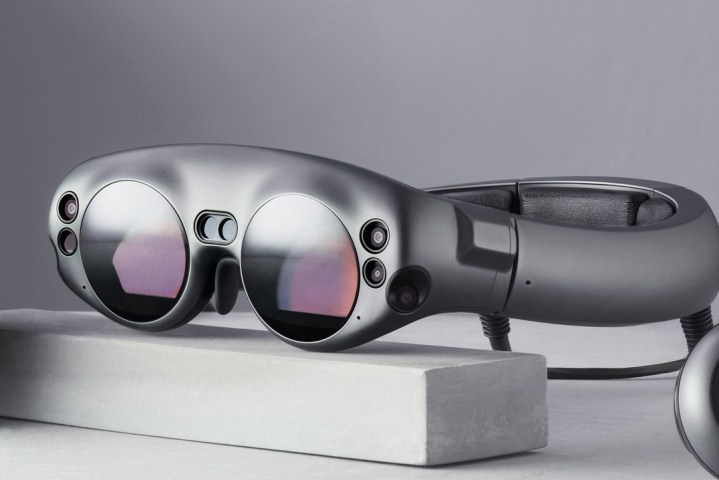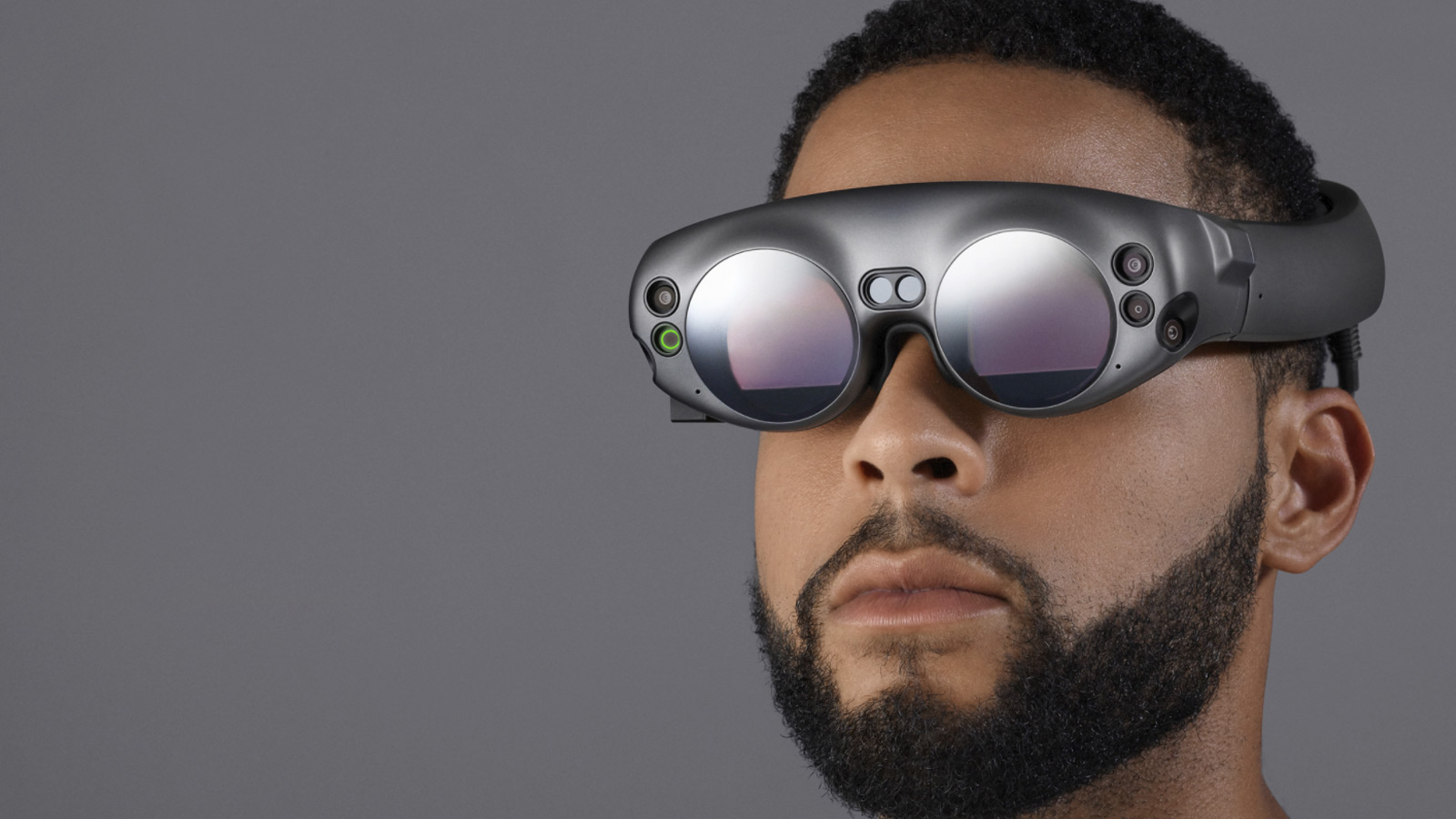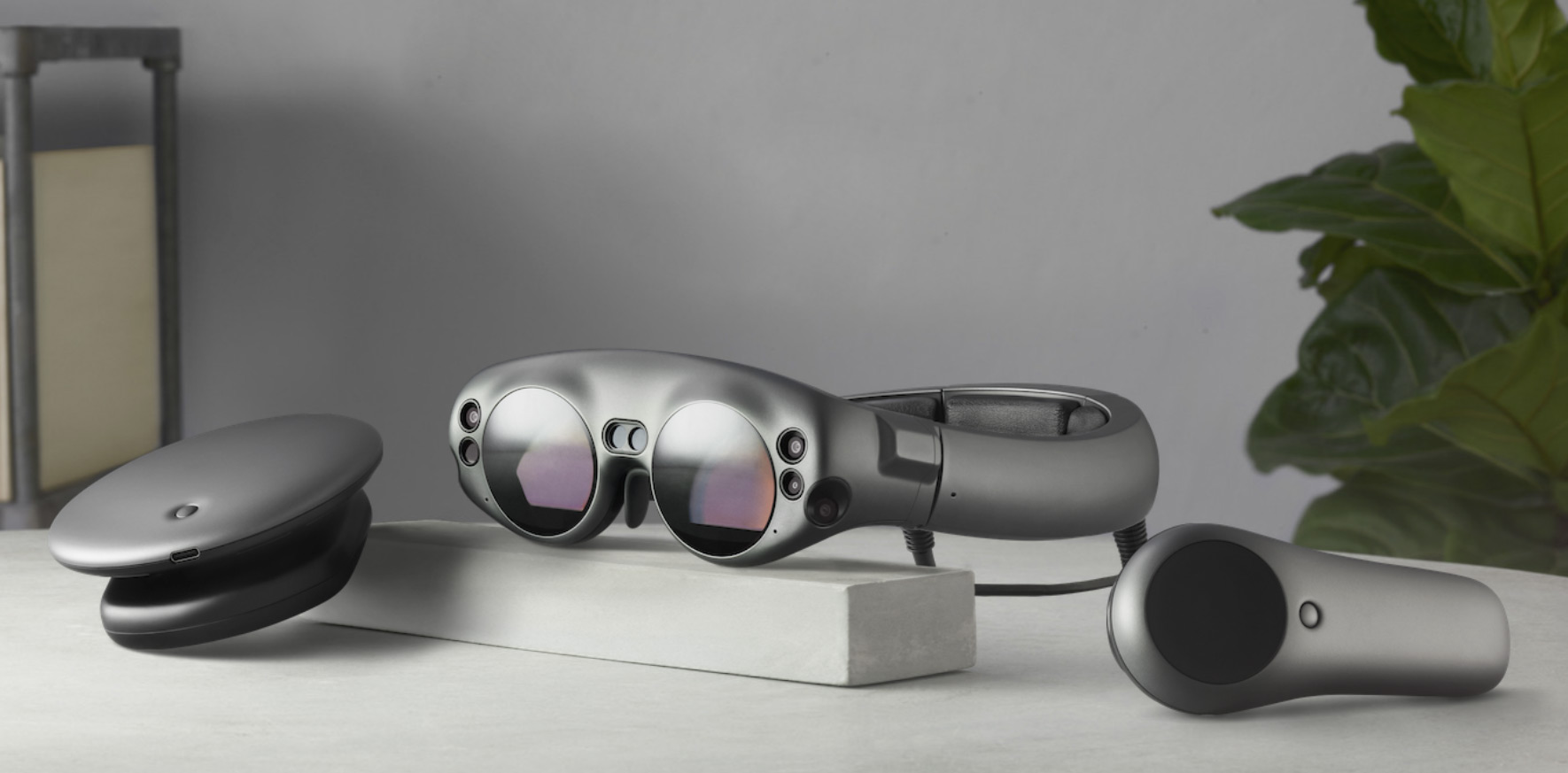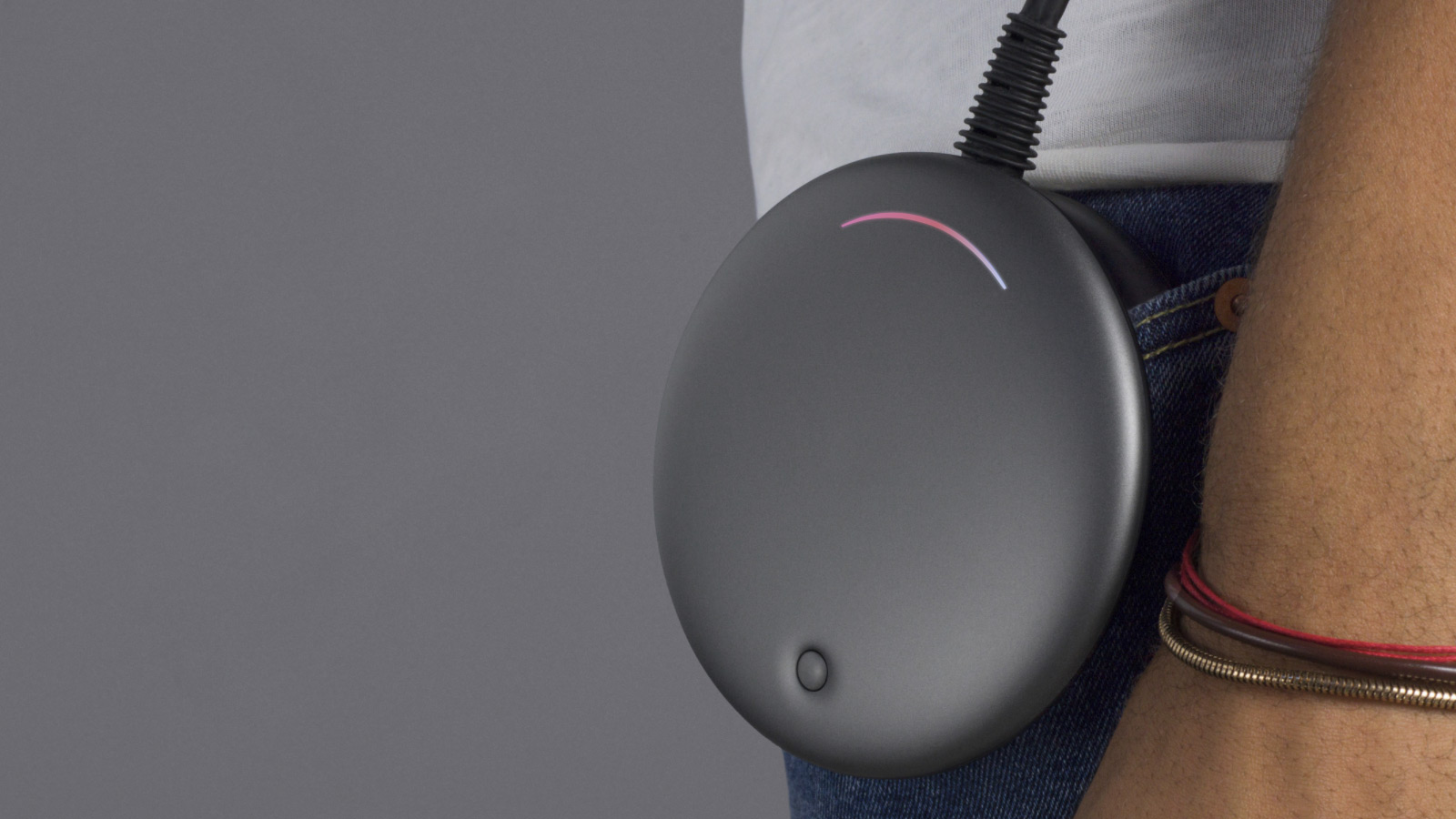
Magic Leap isn’t a household name, but the company has made waves in Silicon Valley, creating buzz with promises of a major step forward for augmented reality. Its website promises to add “another dimension to computing” and “change how we experience the world.” In interviews and sneak peaks, the company gives the impression it thinks all previous attempts at VR and AR tech are a bit silly in comparison to what it’s built. Soon, we’ll finally know if that’s the truth — the Magic Leap One will finally be available from some AT&T locations starting in April.
So, what is the Magic Leap One? What might make it different from previous headsets? And should you believe the hype? Here’s everything we know.
Enter the Lightfield
Magic Leap One is built around a key technology called “Digital Lightfield.” The company is extremely secretive about the details, but it hasn’t been afraid to talk about the benefits. Rony Abovitz, founder of Magic Leap, told Rolling Stone that the Light Field is “[…] the photon wavefront and particle light field everywhere in the universe. It’s like this gigantic ocean; it’s everywhere. It’s an infinite signal and it contains a massive amount of information.”
That sounds … a bit complex. And it is. But Magic Leap believes our brains don’t need all the data. Instead, it can serve up only a limited selection of visuals, and rely on our brains to work through the rest.
The company hasn’t gone into specifics about how its approach works, but similar ideas are not unheard of. Nearly all the players in the VR space have plans to implement foveated rendering, a technique that lowers the detail of areas outside your current focus. It works because the detail of our peripheral vision is much lower — yet, because of how our brains work, we don’t actively notice it.
We’d like to say more, but we can’t for now, because we don’t know. Even the handful of journalists who’ve handled the prototype weren’t told specifics about how it works. All we know is that it projects a “light field” before your eyes. Magic Leap claims it won’t tire you and looks more convincing that existing competitors, but that remains to be seen.
Grab the goggles
The overall design seems like a sci-fi take on steampunk goggles. Though much smaller than an Oculus Rift or even the Microsoft HoloLens, the Magic Leap One is much larger than a pair of sunglasses. Multiple lenses mounted on the exterior include the cameras and light sensors that image the world in front of you, so AR experiences can be layered over it.
“When you make digital penguins walk off the edge of the coffee table, they fall off the edge of the coffee table, just like real penguins would,” the company says.
The Magic Leap One latches on your head with just a single loop. There are no straps or Velcro involved. It looks nice, and we presume it works like the Acer Mixed Reality headset and the Microsoft HoloLens, both of which use a rotating tensor to tighten until they’re secure. It’s a comfortable and lightweight approach, but we imagine it’ll work better for some people than others, and it likely won’t feel as secure as an Oculus Rift or HTC Vive.
While the goggles themselves are round, photos appear to show rectangular hardware behind them. That suggests the rounded design is exactly that, and the internal hardware might look like the HoloLens. The field-of-view has a 4:3 aspect ratio measuring 40 degrees across, 30 degrees vertical and 50 degrees diagonal. This makes us wonder how Magic Leap’s approach differs from Microsoft.
Magic Leap provides its AR goggles in two sizes to accommodate various eye distances and head shapes. Unfortunately, you can’t use prescription eyeglasses with the goggles. Instead, you must purchase lens inserts based on your personalized prescription. But the kit does include swappable nose pieces and other parts so that the goggles fit snugly on your face.
Lightpack and controller
While the headset is the start of Magic Leap One, the Lightpack used to power it is also interesting. Unlike most VR and AR headsets, Magic Leap doesn’t look to a smartphone or PC do the heavy lifting. The processing is handled by the company’s tiny hockey puck-shaped Lightpack miniature PC. You can’t stuff it into your pocket due to cooling issues and its overall size, but you can clip it to your pocket or use the company’s optional fabric strap.
This is a bold approach. It gives Magic Leap complete control but also isolates the headset from its competitors. The headset will only work with AR experiences that are designed specifically for it — or, perhaps, ported over from another platform. We assume this means you will purchase only from the company’s own storefront and run them only in the company’s own environment.
On a technical front, the Lightpack is powered by Nvidia’s Tegra X2 “Parker” all-in-one processor with six CPU cores and 256 GPU cores. The hand-held PC also includes 8GB of system memory, 128GB of storage, one USB-C port, and Wireless AC and Bluetooth 4.2 connectivity. The built-in rechargeable battery promises up to three hours of continuous use and recharges via an included 45-watt USB-C charger.
As for the controller, it supports haptic feedback vibrations and six-degrees-of-freedom tracking. Similar to the controller provided with the Oculus Go and Gear VR, it includes a circular touchpad with a ring of LEDs, a shoulder button, a trigger button and a home button. The embedded battery lasts for up to 7.5 hours and is recharged by an included 15-watt USB-C charger.
It’s disappointing, really. We’ve seen controllers like this before, and we already know they don’t work well. Perhaps Magic Leap will be used primarily without a controller — but if not, the controller could become a serious issue.
It’s not the next Google Glass
While the Magic Leap One looks cool, a lot of people have mentioned they “wouldn’t want to be seen” in them.
It’s true that they’re not the most practical fashion statement — but you’re not supposed to walk around town in them, anyway. While Magic Leap hasn’t explicitly said you can’t take them on a hike, every demo, tidbit, and game has involved AR experiences that take place inside, in a single area. That’s not a surprise when you consider the headset and its connected hardware.
The display technology also likely has its limits. Magic Leap says it works by projecting light in some fashion, and every projector fights against outside light sources. In a very bright environment, like a park on sunny day, a projected image can become almost impossible to see — even on the world’s most powerful projection equipment. HoloLens developers have already struggled with this problem.
In short — this isn’t Google Glass. Magic Leap One doesn’t seem meant for use outside your home or office, so its style is less of an issue.
Price and availability
The Magic Leap One Creator Edition launched on August 8, 2018 for a hefty starting price of $2,295. It initially launched in Chicago, Los Angeles, Miami, New York, San Francisco, and Seattle. The kit includes the headset, the Lightpack computing pack, the handheld controller, the Fit Kit (nose and face pieces), chargers, and a Start Guide.
Now, the headset is coming to consumers too. AT&T has announced the Magic Leap One will be available from flagship AT&T stores in Boston on April 1, Chicago on April 3, San Francisco on April 6, and online on April 5. At those AT&T stores, you’ll be able to check out a special Game of Thrones encounter, where you’ll confront a White Walker. The consumer edition of the Magic Leap One is the same price as the developer edition — a hefty $2,295.
Included with the kit are several preview experiences developed in-house and through early access partners. These include Dr. Grordbort’s Invaders, the music-based Tónandi, and Project Create, a sandbox mixed-reality experience. Magic Leap also provides an optional fabric strap for the Lightpack computing device.
Updated on March 26, 2019: A consumer version of the Magic Leap One headset will be available starting on April 1.
Editors' Recommendations
- Everything you need to know about buying a GPU in 2024
- What is SATA? Here’s everything you need to know about it
- What is NVMe? Everything you need to know about high-speed storage
- What is Display Stream Compression? Everything you need to know about DSC
- AMD FSR (FidelityFX Super Resolution): everything you need to know







